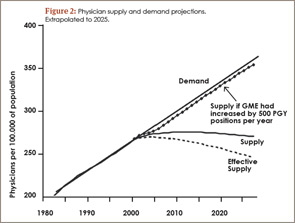Most patients embraced this viable delivery method, said Dr. Arriaga, but there were a few barriers. For example, the scope clouded in patients with moist ears, and some patients resisted remote care delivery. But overall, Dr. Arriaga said, telemedicine provided a way to “increase the availability of care in a situation where we would have had to either turn people away or to create wait environments that would have been clinically unacceptable.”
Explore This Issue
January 2010Going Forward
Dr. Cooper believes that all physicians should engage in public policy debates and work to increase GME funding. It might also be helpful, he said, for specialists to speak as a bloc, rather than as separate entities, when working with Congress and other policymakers.
Steven B. Levine, MD, who practices at ENT and Allergy Associates, LLC, in Trumbull, Conn., agrees with this notion. As legislative chair and president-elect of the Connecticut ENT Society, he said, “Banding together with our brethren in ophthalmology, orthopedic surgery, and anesthesiology, among others, has helped us gain a better voice in our legislative process at the state level.”
Dr. Kennedy plans to take over as chair of the AAO’s Physician Workforce Committee. In the next three years, he said, “we will be getting some of the brightest minds together within the specialty to start thinking in a proactive fashion about the direction we want to take. One thing we can guarantee is that our practice will not stay the same. We don’t want to mortgage the future of our specialty by ignoring change.”
Dr. Levine, who is also a member of the AAO-HNS Board of Governors, applauds these discussions at both the leadership and membership levels but takes a bit of an optimist’s view on the issue of physician shortages. The shift in the supply and demand curve, which will reduce physician supply relative to patient demand, may not be an entirely bad thing, he posits. “It might be a mistake to try to avoid that shift, or to blunt it. It might be in our best interests, actually, to let market forces prevail!” ENTtoday
Gretchen Henkel is a medical writer based in California.
TOP IMAGE SORCE: JUPITERIMAGES

Leave a Reply